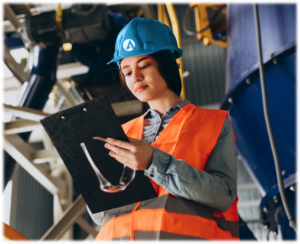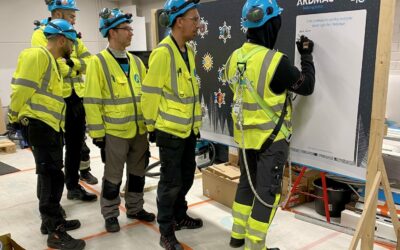As the construction industry continues to grow the last several years, so has its way of doing business. It’s not just about bricks and mortar anymore.
Construction companies are rapidly changing how they work and the tools being utilised.
1. Technology
Advances in digital technology and big data are creating a demand for innovation within the construction industry, evident with the recent buyout by Oracle of construction software specialist Textura for $663m.
Here are some of the more popular tech trends:
- Building Information Modelling (BIM) has been a growing trend for years. BIM delivers the ability to provide more consistent, more accurate and less time-consuming project document generation. In addition, BIM users can expect better collaboration and coordination among the different parties involved in a project, according to industry users.
- Cloud based systems that allow the remote sharing of data on a construction site in real time, like Raken, simplyworkflow and basestone, will replace the traditional paper based review method. These reporting apps, available on a variety of devices like smartphones and tablets, are used for reporting on such items as time keeping, project planning, and snag lists. This allows input and storage readily thereby saving time and money as it is done directly in the field.
- Asset mapping focuses on operational equipment, including heating and air conditioning, lighting and security systems, collecting data from serial numbers, firmware, engineering notes of when it was installed and by whom, and combines the data in one place. The system can show engineers in real time on a map where the equipment needs to be installed and, once the assets are connected to the real-time system using the internet of things, these can be monitored via the web, app, and other remote devices and systems. It helps customers build databases of asset performance, which can assist in proactive building maintenance, and also reduce building procurement and insurance costs.
2. Going Green
Commercial construction has typically led the pack in green adoption. The growing trend is driven not just by a desire to produce environmentally friendly structures, but by consumer demand, higher-quality results and lifecycle cost savings. Companies will be aiming for certifications like the BRE Environmental Assessment Method (BREEAM) or Leadership in Energy and Environmental Design (LEED), which are voluntary assessment method used to describe both new and existing buildings’ environmental performance.
3. Battle for Talent
A by-product of the recession was the emigration of qualified talent and the downturn applicants into university programmes and apprenticeships in the construction industry. This has left a skills gap in the marketplace. Not only has the construction industry struggled to appeal to a younger, more technologically savvy workforce, it is now coupled with the need across industries for companies to replace retiring baby boomers.
4. Modular Construction
Permanent modular construction will be a huge trend in the coming years and is no longer viewed as boxes on top of boxes. It offers the benefit of reduced construction time, less waste and possible cost savings.
It looks like commercial construction as it is built using many of the same things: metal studs, concrete, or even wood. Modular construction fits particularly well when in a time crunch, from fast food restaurants that need to go up quickly to army barracks for military deployment, and also within the pharma industry. It allows additions when time permits. It’s particularly popular for how it fits in with LEED requirements.
5. Drone Aerial Photography
The importance of drones for construction continues to grow.As Ardmac’s MD Roy Millar commented, “Ardmac have been utilizing the technology to illustrate the stages of our Design and Build projects to our valued clients. Using the drone, we were able to get some fantastic perspectives and show the clear progression of the job which would have been impossible otherwise.”
The work carried out by the drones can now go towards creating 3D models, providing specific numeric data on the scheme of work’s progress, and even be used to create live interactive maps of projects for clients.
An established tool in aerial photography, the drones have now been developed to map projects digitally via digital mapping equipment installed on their underbellies.



